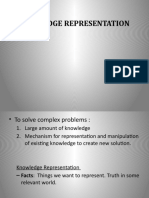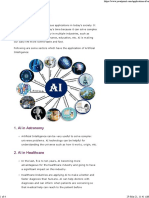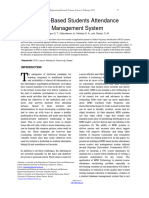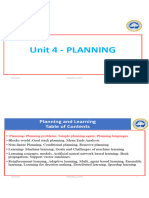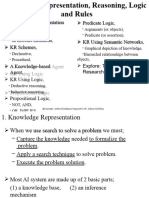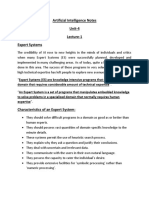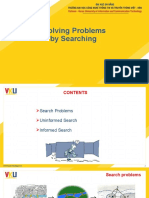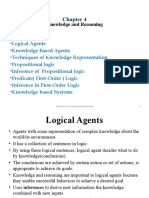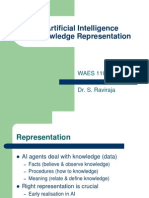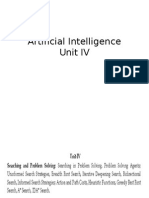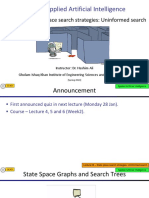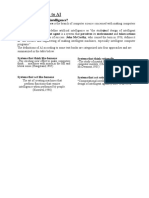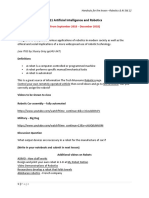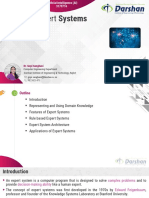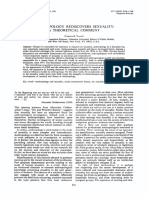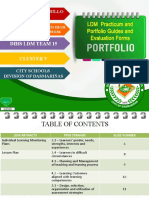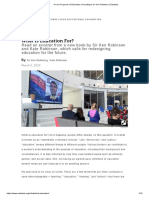0% found this document useful (0 votes)
212 views35 pagesAI UNIT3 Lecture Notes It
The document discusses key concepts in knowledge representation and reasoning including:
1. Advanced knowledge representation techniques allow artificial intelligence agents to understand and utilize information about the real world to solve complex problems.
2. Important issues in knowledge representation include choosing important attributes, representing relationships between attributes, determining the appropriate level of detail, representing sets of objects, and finding the right knowledge structure.
3. Nonmonotonic reasoning is needed to deal with incomplete or uncertain information, unlike monotonic reasoning which assumes complete and consistent information. New information can cause inferences to be defeated.
Uploaded by
tonyCopyright
© © All Rights Reserved
We take content rights seriously. If you suspect this is your content, claim it here.
Available Formats
Download as PDF, TXT or read online on Scribd
0% found this document useful (0 votes)
212 views35 pagesAI UNIT3 Lecture Notes It
The document discusses key concepts in knowledge representation and reasoning including:
1. Advanced knowledge representation techniques allow artificial intelligence agents to understand and utilize information about the real world to solve complex problems.
2. Important issues in knowledge representation include choosing important attributes, representing relationships between attributes, determining the appropriate level of detail, representing sets of objects, and finding the right knowledge structure.
3. Nonmonotonic reasoning is needed to deal with incomplete or uncertain information, unlike monotonic reasoning which assumes complete and consistent information. New information can cause inferences to be defeated.
Uploaded by
tonyCopyright
© © All Rights Reserved
We take content rights seriously. If you suspect this is your content, claim it here.
Available Formats
Download as PDF, TXT or read online on Scribd
/ 35




